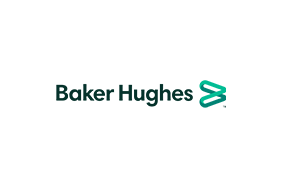Baker Hughes Acquires Mosaic Materials to Advance Next-Generation Carbon Dioxide Capture Technology

HOUSTON and LONDON, April 21, 2022 /3BL Media/ – Baker Hughes, an energy technology company, has acquired Mosaic Materials Inc. to further develop and scale its next-generation capture technology for carbon dioxide (CO2) reduction from stationary sources and CO2 removal (CDR) from the atmosphere.
Mosaic’s metal-organic framework (MOF) technology is a proprietary adsorbent material that acts like a high-capacity molecular sponge to selectively capture CO2. Baker Hughes will draw from its existing advanced capabilities, including modular design and material science, to develop and scale Mosaic’s innovative technology, enabling direct air capture (DAC) with a solution that requires significantly less energy to operate and provides lower total cost of ownership.
Both carbon capture of emissions from power and industrial facilities, as well as carbon dioxide removal such as DAC, will be needed to meet climate goals and emission reduction targets. Creating economical, scalable and energy-efficient DAC systems that can effectively capture CO2 from the atmosphere is important for supply into the CO2 utilization market, including eFuels.
“Removing carbon through a multi-pronged approach, including direct air capture, is critical to overcoming climate change,” said Rod Christie, executive vice president of Turbomachinery & Process Solutions at Baker Hughes. “This is why we are investing in several emerging technologies, including Mosaic Materials, to develop a comprehensive and diversified portfolio that can significantly and efficiently reduce as well as eliminate CO2, across multiple industries, including hard-to-abate sectors.”
Mosaic’s technology is the latest addition to Baker Hughes’ portfolio of carbon capture utilization and storage solutions, which includes post-combustion capture, compression, subsurface storage and long-term integrity and monitoring. The Mosaic DAC technology can serve a variety of sectors across the energy and industrial value chain, including refining, aviation, shipping, municipalities, steel and cement manufacturing. DAC can work in tandem with emissions controls to lower the aggregate amount of CO2 that is emitted. While emissions capture and improved energy efficiency at industrial sites can reduce current greenhouse gases, DAC can also cut legacy emissions in the atmosphere.
“Joining Baker Hughes provides Mosaic Materials with the means and additional engineering expertise required to scale and commercialize our cost-competitive direct air capture technology,” said Nathan Gilliland, CEO of Mosaic Materials. “We believe our technology can enable more efficient direct air capture versus other DAC offerings. Together with Baker Hughes, we can now embark on accelerating the development of this compact but powerful system.”
Alameda, Calif.-based Mosaic’s metal-organic framework also has ongoing agreements with the U.S. Navy and NASA for its technology to be used to improve breathing air quality within confined spaces such as submarines and space missions.
About Baker Hughes
Baker Hughes (NASDAQ: BKR) is an energy technology company that provides solutions for energy and industrial customers worldwide. Built on a century of experience and conducting business in over 120 countries, our innovative technologies and services are taking energy forward – making it safer, cleaner and more efficient for people and the planet. Visit us at bakerhughes.com.
About Mosaic Materials
Mosaic Materials is dedicated to reducing the cost and environmental impact of fossil fuels through the application of proprietary, highly efficient gas separation technologies. We utilize porous solids known as metal-organic frameworks to selectively remove impurities such as CO2 from gas mixtures in an array of applications from submarines to power plants. Visit us at mosaicmaterials.com.
###

